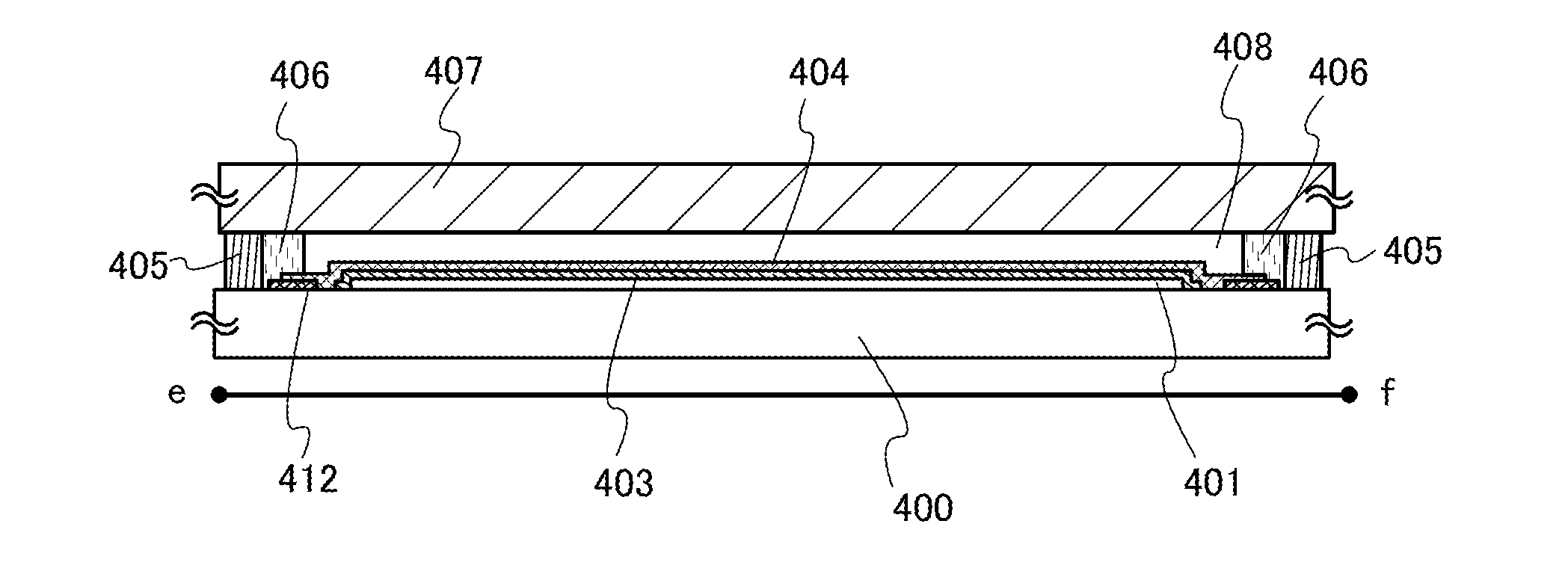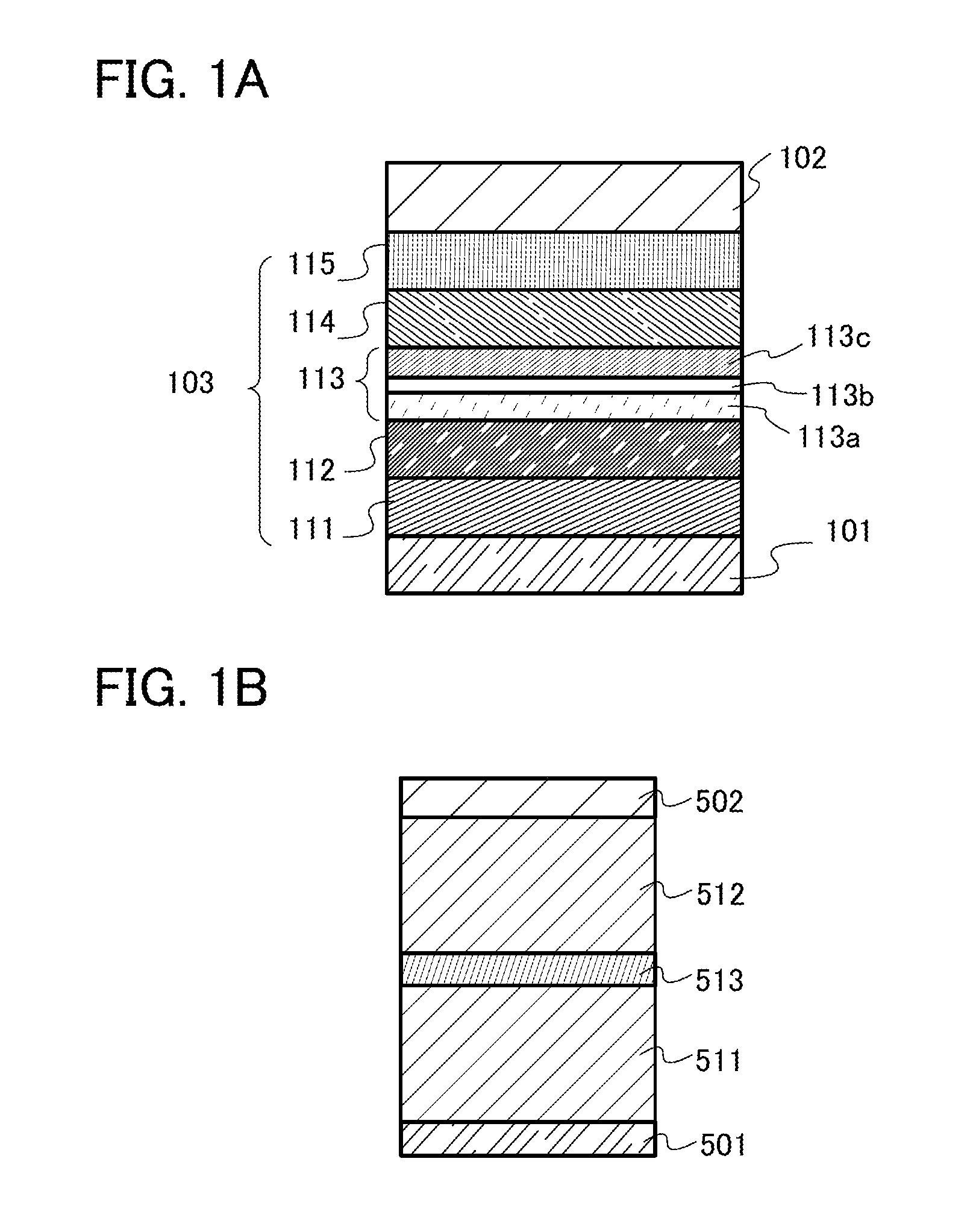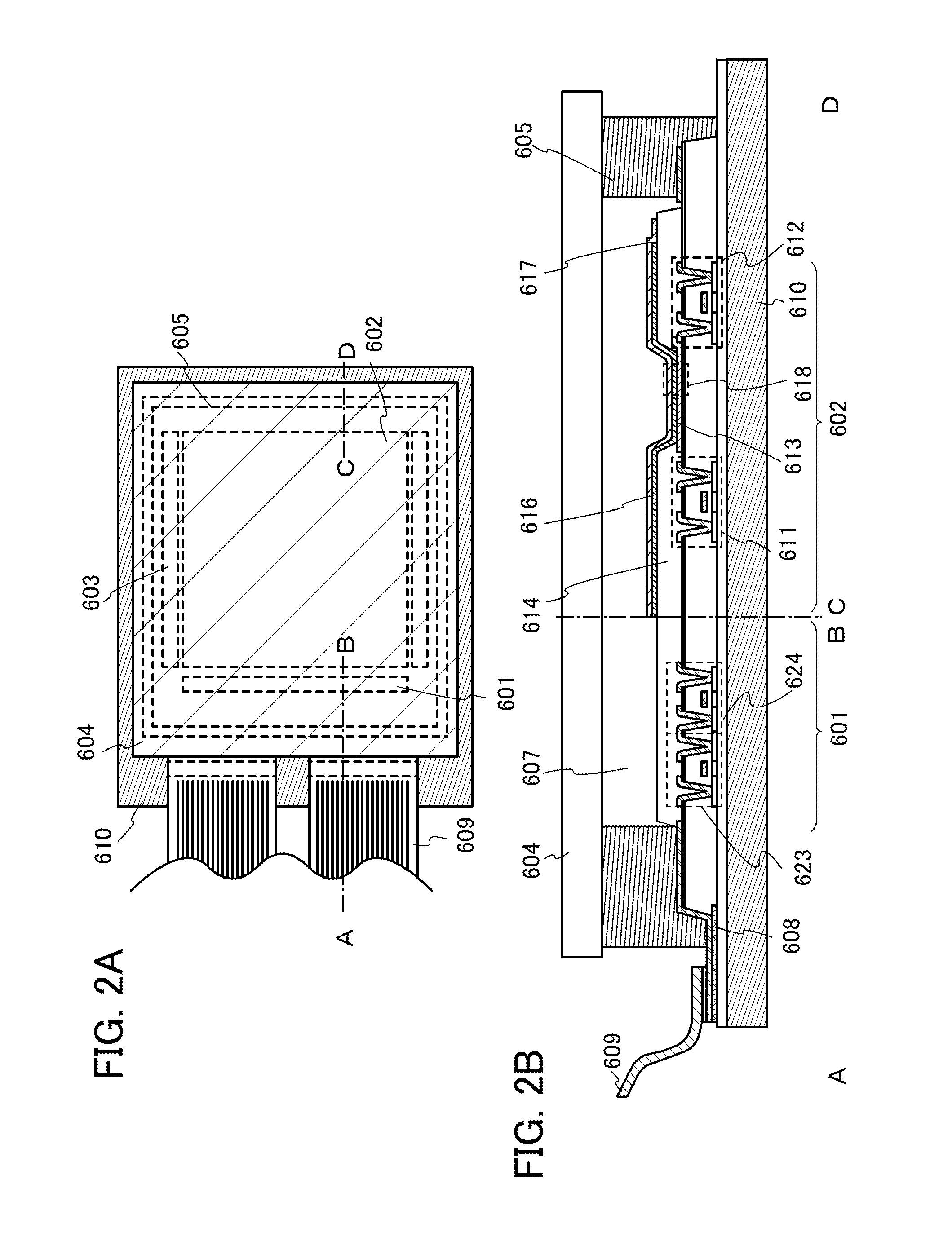Light-emitting element, display module, lighting module, light-emitting device, display device, electronic appliance, and lighting device
a technology of light-emitting elements and display modules, which is applied in the direction of energy-efficient lighting, thermoelectric devices, sustainable buildings, etc., can solve the problems of affecting the practical application of light-emitting elements, and achieve the effects of high emission efficiency, advantageous practical application, and high efficiency
- Summary
- Abstract
- Description
- Claims
- Application Information
AI Technical Summary
Benefits of technology
Problems solved by technology
Method used
Image
Examples
example 1
[0247]In this example, methods of fabricating Light-emitting elements 1 to 3 each of which is one embodiment of the present invention and Light-emitting element 4 which is a comparative light-emitting element and characteristics thereof are described. Structural formulae of organic compounds used for Light-emitting elements 1 to 4 are shown below.
(Method of Fabricating Light-Emitting Element 1)
[0248]A film of indium tin oxide containing silicon oxide (ITSO) was formed over a glass substrate by a sputtering method to form the first electrode 101. The thickness was 110 nm and the electrode area was 2 mm×2 mm. Here, the first electrode 101 functions as an anode of the light-emitting element.
[0249]Next, in pretreatment for forming the light-emitting element over the substrate, a surface of the substrate was washed with water and baked at 200° C. for 1 hour, and then UV ozone treatment was performed for 370 seconds.
[0250]After that, the substrate was transferred into a vacuum evaporation...
example 2
[0267]In this example, a method of fabricating Light-emitting element 5 which is one embodiment of the present invention and characteristics thereof are described. Structural formulae of organic compounds used for Light-emitting element 5 are shown below.
(Method of Fabricating Light-Emitting Element 5)
[0268]A film of indium tin oxide containing silicon oxide (ITSO) was formed over a glass substrate by a sputtering method to form the first electrode 101. The thickness was 110 nm and the electrode area was 2 mm×2 mm. Here, the first electrode 101 functions as an anode of the light-emitting element.
[0269]Next, in pretreatment for forming the light-emitting element over the substrate, a surface of the substrate was washed with water and baked at 200° C. for 1 hour, and then UV ozone treatment was performed for 370 seconds.
[0270]After that, the substrate was transferred into a vacuum evaporation apparatus where the pressure had been reduced to approximately 10−4 Pa, and was subjected to ...
example 3
[0286]In this example, methods of fabricating Light-emitting elements 6 and 7 each of which is one embodiment of the present invention and characteristics thereof are described. Structural formulae of organic compounds used for Light-emitting elements 6 and 7 are shown below.
(Method of Fabricating Light-Emitting Element 6)
[0287]A film of indium tin oxide containing silicon oxide (ITSO) was formed over a glass substrate by a sputtering method to form the first electrode 101. The thickness was 110 nm and the electrode area was 2 mm×2 mm. Here, the first electrode 101 functions as an anode of the light-emitting element.
[0288]Next, in pretreatment for forming the light-emitting element over the substrate, a surface of the substrate was washed with water and baked at 200° C. for 1 hour, and then UV ozone treatment was performed for 370 seconds.
[0289]After that, the substrate was transferred into a vacuum evaporation apparatus where the pressure had been reduced to approximately 10−4 Pa, ...
PUM
 Login to View More
Login to View More Abstract
Description
Claims
Application Information
 Login to View More
Login to View More - R&D
- Intellectual Property
- Life Sciences
- Materials
- Tech Scout
- Unparalleled Data Quality
- Higher Quality Content
- 60% Fewer Hallucinations
Browse by: Latest US Patents, China's latest patents, Technical Efficacy Thesaurus, Application Domain, Technology Topic, Popular Technical Reports.
© 2025 PatSnap. All rights reserved.Legal|Privacy policy|Modern Slavery Act Transparency Statement|Sitemap|About US| Contact US: help@patsnap.com



